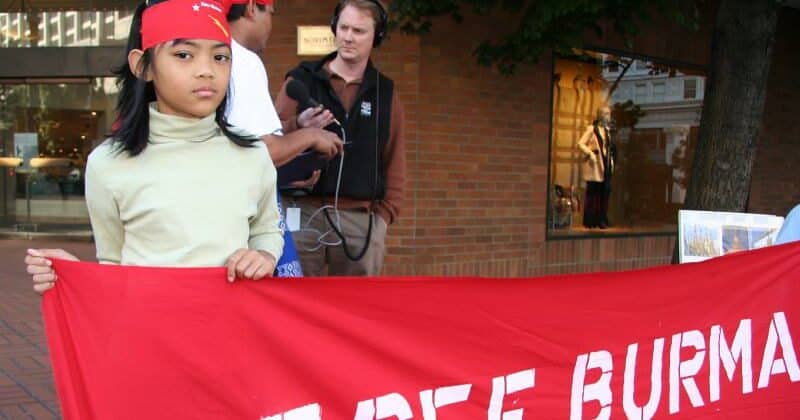

March has seen an escalation of bloody repression against peaceful and unarmed demonstrators by Myanmar’s military – the Tatmadaw – who seized total power on 1 February. As well as live rounds, police are using rubber bullets and fragmentation grenades, which emit a shower of ball bearings causing severe injuries. On 28 February this resulted in 18 deaths and over 30 seriously wounded. On 3 March paramilitary police, using high velocity rifles, killed at least 38 people, including one a 14 year-old. The killings and maimings took place in Yangon, the country’s largest city and industrial centre, in Mandalay and in many other cities across the country.
After a month of increasingly massive demonstrations, Min Aung Hlaing, the commander-in-chief of the armed forces, has plainly decided to use lethal force to terrorise the rebellious masses. Yet the steep increase in killings and the use of stun grenades and tear gas have failed to end the mass protests, though they have forced defensive measures to take precedence. Whilst still remaining completely peaceful, young people have organised lines of “defenders” with helmets and improvised shields, throwing up barricades to impede the passage of military vehicles.
A factor with enormous potential for victory is the role played by workers in the protests and repeated strikes, reaching general strike proportions. Civil servants, health workers, copper miners, garment workers and rail workers walked out and joined the protests.
Workers in Myanmar, especially garment factory workers in the Yangon region, mostly women in their late teens and early 20s, have been organising over the past decade, since the limited liberalisation under Aung San Suu Kyi. A prominent organiser in the present protests, Moe Sandar Myint, said, “Workers are ready for this fight. We know that the situation will only deteriorate under military dictatorship, so we will fight as one, united, until the end.”
The Industrial Workers Federation of Myanmar (IWFM), which mobilised for a general strike on February 22 now faces arrest warrants for twenty union leaders, including its vice president, Soe Lay. The Federation’s president Khang Zar has issued an appeal; “Through civil disobedience, protest and strikes, the people of Myanmar are speaking up clearly and loudly. We need the international community to do the same. We need you to stand by our side to make this coup collapse.”
It is plain now that the generals will not be dislodged from power even by repeated evidence that the population of Myanmar’s cities rejects their dictatorship. Despite three or four multi-party elections since 1962, the Tatmadaw has never relinquished real power to a civilian government. Though various factors are cited for the resilience of the youthful protesters, including social media, it is plain that nothing has changed in the mindset of the generals, who live in their luxury teak-lined mansions, with private golf courses, in special zones far from the cities.
If the workers of Myanmar can mobilise in an all-out general strike, this could paralyse the military and open the possibility of producing splits in the army, particularly between the rank and file and the officer caste. In the end only by breaking the discipline of the soldiers, bringing them over to side of the people will it be possible to turn mass protest into revolution, into an insurrection that will drive the murderers from power and bring them to justice for their crimes over the past half-century.